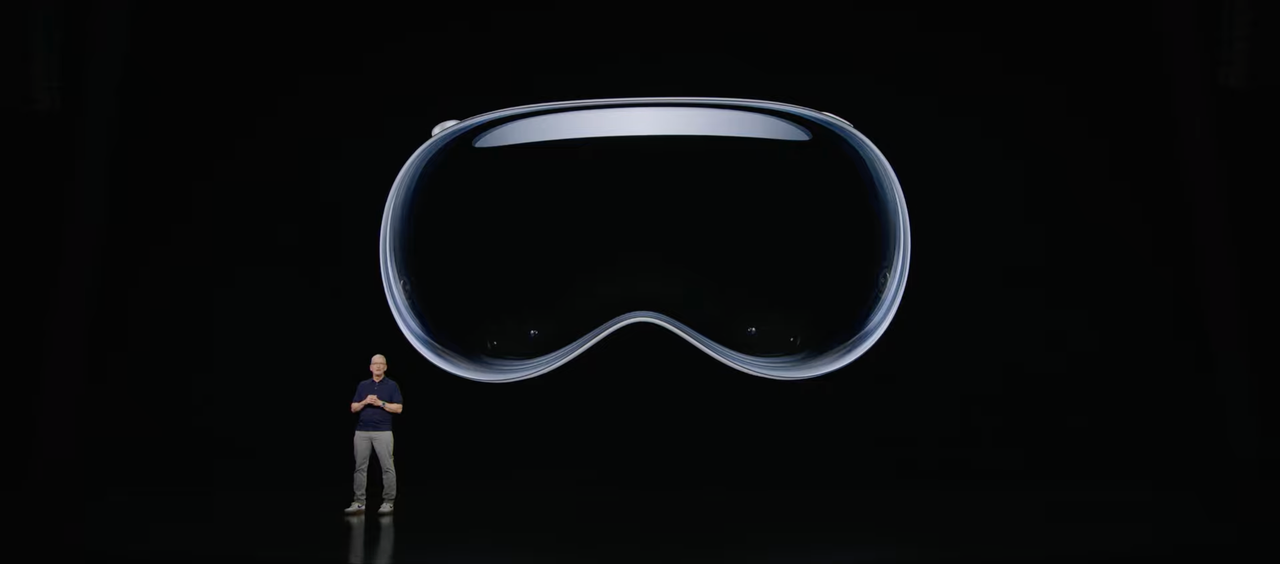Apple’s recent marketing efforts have seen a shift in terminology, moving away from the established terms of Augmented Reality (AR) and Virtual Reality (VR) and embracing a new concept: spatial computing. This seemingly subtle change signifies a broader vision for the future of human-computer interaction, one that goes beyond layering digital information onto the real world or transporting users entirely into virtual environments.
Key Highlights:
- Apple’s recent push for the term “spatial computing” goes beyond existing concepts like Augmented Reality (AR) and Virtual Reality (VR).
- It encompasses a broader vision of seamless interaction with digital information in the real world, using advanced hardware, software, and AI.
- The company’s rumored mixed reality headset, “Vision Pro,” could be the first step in realizing this vision.
- Potential applications span various fields, including gaming, education, healthcare, and design.
- The success of spatial computing hinges on overcoming technical challenges and creating compelling user experiences.
So, what exactly is spatial computing? In essence, it refers to the ability of devices to understand and interact with the physical world in real-time, seamlessly integrating digital elements into our surroundings. This involves not just visual overlays but also spatial awareness, hand gesture recognition, and even haptic feedback, creating a more immersive and intuitive experience.
While the term itself is relatively new, the underlying technologies have been evolving for years. Advancements in areas like computer vision, artificial intelligence, and sensor technology are paving the way for truly interactive and intelligent devices. Apple’s recent acquisition of AR startup Vuzix and the rumored development of its own mixed reality headset, codenamed “Vision Pro,” are strong indicators of their commitment to this emerging field.
Beyond Gaming: The Potential of Spatial Computing
While gaming is often the first application that comes to mind when discussing AR and VR, the potential of spatial computing extends far beyond entertainment. Imagine:
- Revolutionizing education: Students could dissect virtual models in biology class, explore historical sites in 3D, or even collaborate on projects in shared virtual spaces.
- Transforming healthcare: Doctors could visualize medical scans in context, conduct remote surgeries with enhanced precision, or even train medical students with interactive simulations.
- Boosting design and engineering: Architects could walk through virtual models of buildings, engineers could collaborate on complex designs in real-time, and manufacturers could optimize production processes with spatial data.
However, the realization of these possibilities hinges on overcoming several challenges. Creating truly immersive and seamless experiences requires significant advancements in hardware, software, and AI capabilities. Additionally, privacy concerns and the potential for digital overload need to be carefully addressed.
Apple’s Strategic Move and the Future of Spatial Computing
Apple’s focus on spatial computing suggests a long-term vision that goes beyond just selling headsets. They are likely aiming to create an ecosystem of devices and services that seamlessly integrate the physical and digital worlds. This could involve not just hardware like the Vision Pro, but also software development tools, ARKit, and even spatial-aware versions of existing apps like Maps and FaceTime.
The success of spatial computing will depend on several factors, including user adoption, compelling applications, and overcoming technical hurdles. However, Apple’s strategic move positions them as a key player in shaping this nascent technology. Whether they can successfully translate their vision into reality remains to be seen, but one thing is certain: the future of human-computer interaction is likely to be increasingly spatial.







